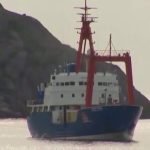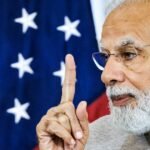No matter what’s happening, educators have the work
The morning after the surprise of Donald Trump’s 2016 election, feeling unmoored and distressed, I put on my shoes to go for what I thought would be my usual three and a half– to four-mile run.
As I took one of my usual routes, rather than taking a left toward home, I took a right toward the (literal) coast, which I knew would add at least three additional miles to my route, but I’d run 10Ks before, and my mind was swirling over the implications of electing a man both unqualified for and, frankly, uninterested in the presidency, so I figured why not extend things a bit?
Reaching the edge of the continental United States at Sullivan’s Island, S.C., I briefly looked at the ocean, turned around and ran home. When I made it back to my front porch, still feeling distressed, I decided to repeat the route, another six-and-a-half-mile loop. Back to the ocean, brief pause, then home.
After my mini Forrest Gump–like sojourn—double the longest run I’d ever done—I was exhausted enough to go inside, shower and take a nap, hoping I would wake up from what I was certain was a nightmare.
Waking up to Donald Trump’s re-election in 2024, I did not go for a long run because I don’t run anymore because it ultimately felt bad for my aging body. Now it’s more weights, spinning and yoga, and I feel better now than I did back then. I also did not have to spend any time processing my surprise, because this result was not surprising.
I think journalist James Fallows sums it up pretty well in his newsletter.
“The electorate of our country has had a good, clear, years-long look at Donald Trump. His braggadocio and his decline. His corruption and his vulgarity. His resentments and his threats. The warnings about what he would do from the most senior people who had ever worked with him, starting with his own vice president.
And, with eyes wide open, with the evidence before them, most of our fellow-citizen voters decided: Bring him back.”
Trump is what the people want, or at least what they think they want. There is mass discontent, and the incumbent party is catching the blame. I have neither the interest nor the expertise to engage in a bunch of what-if election strategy postmortems. Given the fundamentals and the margin, I tend to think that nothing would have made a difference shy of the U.S. Senate doing their job and convicting Trump following his inciting of an insurrection meant to disrupt the peaceful and lawful transfer of power.
So, what now? My first thought in 2016, enshrined in my initial blog posts here following the election, was that we were living in a “post-institutional” age and that our collective focus should be on burnishing the institutions we had as a demonstration that an antidemocratic president was not in the country’s best interests.
Well, that’s over. Our institutions, for the most part, did not step up. The legacy media never could figure out how to accurately cover Trump. We also now have a social media ecosystem—that apparently has much more persuasive power than the legacy media—that is awash in nonsense and misinformation. I don’t know how to drag the culture back from that abyss.
Higher education also did not do its part. Over the past eight years, we’ve only slid farther into a transactional framework, where the institution’s value is primarily to confer credentials in exchange for fees. The way many institutions brought students back to campus during an uncontrolled pandemic on a hope and prayer in order to collect those housing fees was an eye-opener for me, and I would’ve said I was already pretty cynical.
Higher education should be an inherently small-D democratic experience, a shared space where stakeholders figure out how to collaborate productively, but instead we’ve seen a devolution into top-down administration and authority. In some cases, this is the work of state officials who are attempting to bring what they see as areas of liberal power to heel.
In other cases, it is administrators protecting the flow of funding by cracking down on freedoms, particularly those of students, a true betrayal of the mission. I won’t bother linking to the dozen or so posts where I’ve urged institutions to figure out how to operate according to their purported values instead of being beholden to their operations. I wrote a whole book about it. This is, apparently, a bridge too far. It will be even harder with a federal government that is likely to be openly hostile to colleges and universities.
So, what is there to do?
I’m going to return to another theme I’ve been exploring in the last several years: The thing to do is the work.
The work is the activities that are rooted in your deepest values, that have inherent meaning, and in the realm of teaching and education, those that enhance the potential of the students in your community.
As I’ve experienced in my own career, it’s important not to mistake regular educational activities for the work. I had to upend how I taught writing because I realized that the educational activities I had students doing were not in sync with my values and not particularly meaningful to students. I was doing the job but not the work.
That journey transformed my teaching and even my life, and I’m grateful I have this work to fall back on in these times. Just as a thought exercise, I recommend reflecting on how and where the way you’re doing your job may conflict with what you view as your work. In some cases, the constraints will be structural and likely out of your control. This is how I felt about my course and student loads as a non-tenure-track instructor.
But in other cases, I found that I had significant latitude to alter how I did my job in order to bring it in line with what I viewed as the work.
For me, as a writing teacher, the work is to help students build their writing practices in a way that sensitizes them to the unique experience of understanding and expressing one’s own mind in community with others.
Some of the standard conventions of teaching academic writing in a college first-year writing course got in the way of this work, so I either ditched them or altered them in a way that put the focus less on making a product and more on the experience and process of learning.
It worked. Students seemed to get more out of the course than simply checking off a requirement they weren’t interested in, and so I kept experimenting.
Even as I stopped teaching, I’ve held on to that understanding of the work, and it guides my thinking on the new primary focus of my activities: trying to help people adapt to the world of generative AI without losing essential human activities like reading, writing and communicating.
I feel great distress over the election’s results, but thanks to the work, I don’t feel powerless.
I recognize that this may be a Band-Aid over a gaping wound, but for now, it’s a place to start.
You may be interested

Lawmakers in Indiana, home of NCAA HQ, look to expand transgender sports ban to include college programs
new admin - Jan 02, 2025[ad_1] Indiana lawmakers are looking to go the extra mile in their efforts to keep biological male athletes in boys'…

Wayne Osmond, brother of Donny and Marie, dies at age 73
new admin - Jan 02, 2025Wayne Osmond, a singer, guitarist and founding member of the family act The Osmonds, has died. He was 73. His brother,…

Biden ‘glad’ Sugar Bowl being played after New Orleans terror attack
new admin - Jan 02, 2025[ad_1] President Biden sent a message to Americans before the Sugar Bowl between the Georgia Bulldogs and the Notre Dame…




































